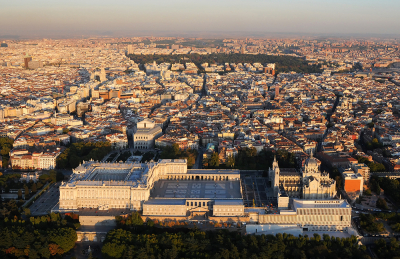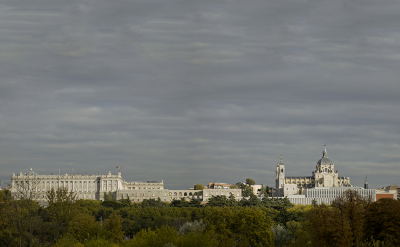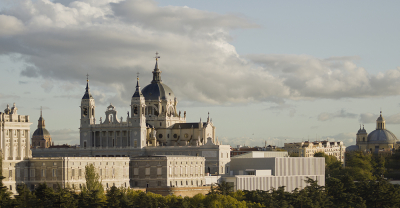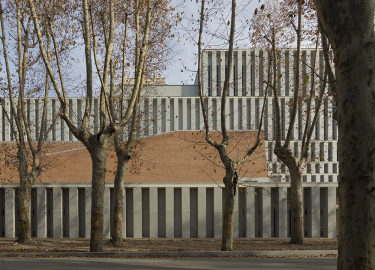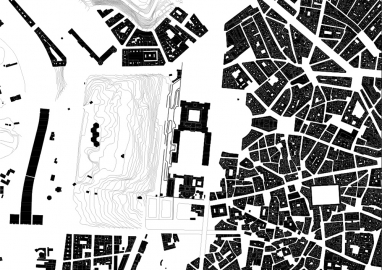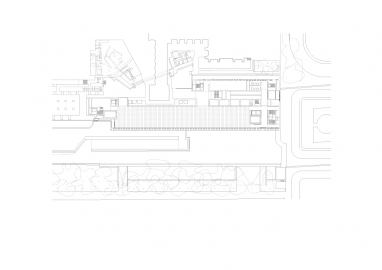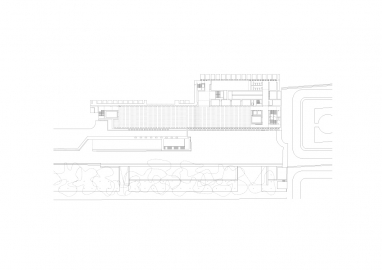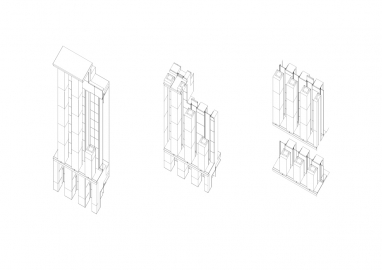Museum of the Royal Collections
We try to produce a building that is invisible from La Almudena Square by occupying a buried space that is yet to exist. The Royal Collection Museum contains the plinth of the Royal Palace, constructing a linear space that follows the lines of the Palace itself.
From an urban perspective, the project is based on two fundamental principles: on the one hand, the Royal Collection museum should be part of the natural-artificial landscape of Madrid’s western edge, and on the other, it is necessary to maintain the open, public nature of La Almunena and preserve views of the parks and gardens beneath the western lip of the city. The Museum, in its linear structure as an inhabited containment wall, tries to reduce the objective (physical and subjective (collective subconscious) environmental impact on the monumental plinth of the Royal Palace.
A simple compact building, a construction that is aware that maximum flexibility and potential is only possible within a strict order, which uses the materials of the Palace and its dignified construction as a feature, with a modern layout, heavy yet light, opaque yet transparent.
The three exhibition levels, equal yet different, hold three differentiated collections: first tapestries, second paintings, sculptures and various items and third carriages. Each space is organised like a warehouse measuring one hundred and ten by sixteen metres, flanked by the remains of the ancient walls to the east and a monumental lattice composed of massive granite pillars open to the west above the Campo del Moro Royal Gardens.
The views across the gardens are the space between the structures, just as the pillars are matter between voids. The space is the rhythm of the beams, and the installations are the interface between what holds the building up. Structure, illumination, views, space, and infrastructure all have blurred edges and exchanged attributes.
The Royal Collections Museum is a plinth for the Palace from the outside; a frame for views of the gardens and the interior features.
Ten years of works that were divided in four construction phases: Foundation, Structure, Architectural envelope, Finishes and building facilities.
In foundation phase, an inhabited retaining wall of secant piles of meter and a half of diameter, and forty meters high, support the loads of the lands of Madrid. Later, the white concrete structure is formed with beams and columns of one per one meter of dimension. Between the columns, the light enter into, and depending on the lighting requirements of the interior, the pillars of the facade are aligned or moved to protect works of art.The dimensions of the exhibition rooms are one hundred and ten per sixteen meters. The high depends on the level, being the higher one eight meters for the tapestries requirements.
The materials of the façade establish a dialogue between the Royal Palace and the Museum: concrete slabs with the limestone horizontals, granite´s collumns with the granite verticals and the aluminium panels with the window wood shutters. A few materials, but high quality materials, due to the historical context of the site, that must endure over time.

